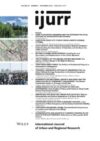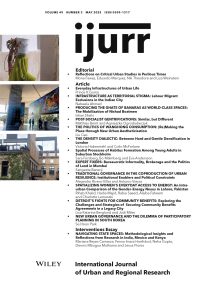Infrastructure is commonly perceived through the interpretive monopoly of hegemonic frames of modernity, leading to the frequent oversight of everyday infrastructures. Extensive capital-intensive infrastructures that are fully integrated and have paled into the background of everyday life are commonly dismissed, criticized, or misconstrued as deteriorating, incongruous, and in need of repair and reinforcement to ‘measure up’. Similarly, ordinary and hybrid techno-popular infrastructures are frequently demeaned as alternative, informal, secondary, less modern and not belonging. In an era where preference and priority are given to shiny new things and innovations, everyday infrastructures are seldom acknowledged as substantive modes of operation in their own right. This article advocates a shift in perspective. Drawing illustrative cases from eastern Africa, I examine everyday infrastructures as critical sites of reference for analyzing, theorizing, and organizing the urban. Rather than starting from a preconceived notion of modernity, I examine everyday infrastructures on their own terms. I propose a series of registers—incomplete relationalities, mundane temporalities and heterogeneous modernities—to stimulate a reappraisal of how we view, read and think about infrastructure. Accordingly, I reiterate the need to reorient the foundational parameters of infrastructure, advocating for a decentered and heterodox perspective that emphasizes infrastructural plurality, multiplicity and inherent incompleteness.
Details
Written by:
Prince K. Guma
Digital Object Identifier (DOI)
https://doi.org/10.1111/1468-2427.13324
About DOI

